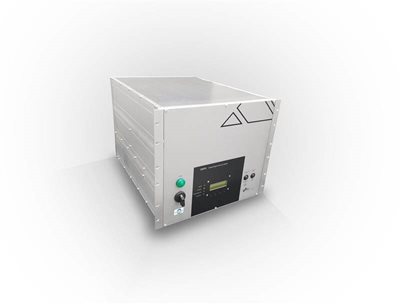NPL was approached by an aerospace company to determine the parameters that relate the pressure, flow rate, and dilution factor of their VPR used in engine testing.
The scientists at NPL performed extensive measurements and provided a science-based physical model between VPR flow rate and pressure that was superior to the model used by the manufacturer. The proposed model was able to predict the VPR flow rate and dilution factor over a wide range of pressures.

Figure 1: A commercial volatile particle remover (Dekati Engine Exhaust Diluter, DEED 100)